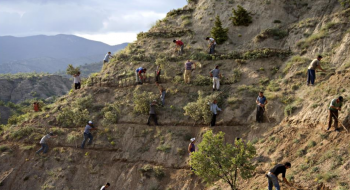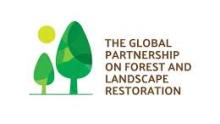Five years of afforestation and restoration in Turkey have dramatically extended tree cover, reduced the land’s vulnerability to erosion, helped combat global warming and greened thousands of public spaces.*
Turkey faces a high level of land degradation and erosion due to topography, climate change and improper agricultural practices, over-destruction of range and forest lands and the sensitivity of many areas to erosion. Frequent flooding has claimed lives and property. Run-off in some of the watersheds is irregular and water quality is low in degraded landscapes.
The National Afforestation and Erosion Control Mobilization Action Plan covered 2.3 million hectares of degraded forest landscapes – almost 3 per cent of the country’s entire land area. Its objectives included rehabilitating forests and making them more productive, combating climate change and desertification and raising environmental awareness.
The action plan, with a total cost of more than $1.8 billion, was applied from 2008 to 2012. The major source of the funds was the national budget as well as donors and the private sector. The work was undertaken by the Ministry of Forestry and Water Affairs together with public institutions and organizations, municipalities, nongovernmental organizations and communities.
During these five years, Turkey achieved afforestation of 210,169 hectares; soil protection afforestation across 315,889 hectares; and private afforestation in 49,385 hectares. The action plan also helped rehabilitate some 1.75 million hectares of degraded forest and 37,880 hectares of rangeland.
Additionally, trees were planted on 8,135 km of highways and 2,262 km of village road; in 27,000 school yards, 1,095 health centres and hospital orchards and 9,826 sanctuaries and cemeteries. School orchards are also being planted and green belt afforestation has been achieved around cities.
Each year of the plan, 300,000 people were employed for seed and seedling production, afforestation, rehabilitation and erosion control work. To conserve biodiversity, only local tree species were used and existing wild fruit trees in the rehabilitation sites were protected.


